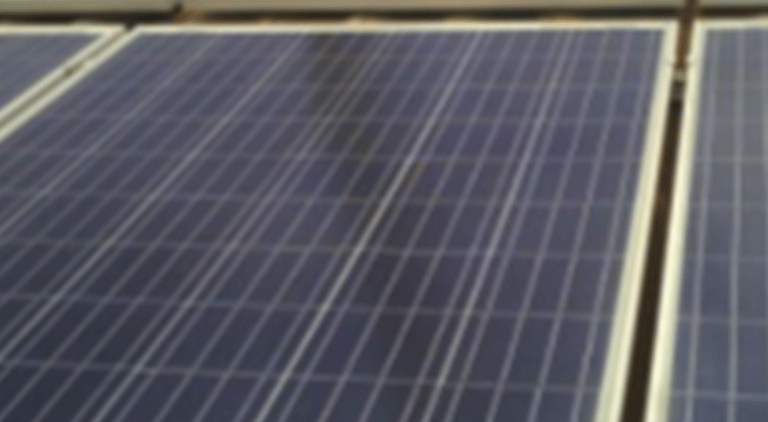Infrared Thermography on Solar Panels
By EPR Magazine Editorial August 29, 2020 2:51 pm IST
By EPR Magazine Editorial August 29, 2020 2:51 pm IST

IR Thermography can be used as an early detection tool for hot spots in solar modules.
Solar modules are guaranteed for 90 percent power output for 10 years and 85 percent power output for the duration of the 25 years. As the panels age with time, the gradual loss of power occurs and it is calculated considering ageing. However, these calculations can’t predict system deterioration caused by lightning storms, panel cell overheating and other component failures. One of the major causes of degradation is hot spot in modules. It may occur due to high resistive joints, cracks etc. Common causes for overheating of solar panels are penetration of moisture and/or dirt, cracks in cells or glass, loose contacts and wiring faults.
Thermography of Solar Panel
Thermography is a safe, non-contact measurement method to find-out “hot-spot” in the solar panels, circuits and other peripherals.
Hot Spot identification using Thermography
Thermal imaging helps to identify mismatched panels where high performing modules are impeded by lower performing modules and overheated connections. Solar systems are outdoor electrical installations exposed to stresses of wind, rain, snow, melt and freeze cycles, and UV radiation. Hot spots are areas of elevated temperature affecting only specific part of the solar panel. It results in lower power output and an acceleration of the materials degradation in the affected area. It usually increases until total failure. Severities can be classified based on hot spot temperature like >5-degree C, >10-degree C and >20-degree C.
Main causes of hot spots and its effect on power efficiency
The causes can be categorised as functional or operational. The functional causes of hot spot are cell mismatch and cell damage. The operational reasons for hot spots are related to installation design and operation, and can include:
Depending on severity of the hot spot a power loss of 5 percent to 12 percent can occur in a single module. Subsequently, it may also affect the output current of the string in which the faulty module is connected. Overall string power may reduce by 3 percent to 7 percent due to hot spot in module.
Through power measurement conducted on a string it can be found-out that a hot spot can reduce output power of the complete sting.
Benefits from Thermography scanning of solar panels
A typical case of hot-spot identified using thermography is shown below –
A hot spot on a single module in a string can drop total string power approximately 5 percent. Day by day hot-spot may increase and power loss also increases accordingly. Based on above data considering 5 percent generation loss in a 400 kW installation i.e. 20 kW loss in power, and assuming 5.5 hour of average time per day of plant, approximate generation loss per day will be 110 units. Considering unit price as Rs. 7 this loss corresponds to total loss of Rs. 2.80 lakhs in terms of revenue per year and Rs. 70 lakhs in a life time of 25 years.
Conclusion
IR Thermography can be used as an early detection tool for hot spots in solar modules. Further, various detection techniques like I-V curve measurement, EL imaging, insulation resistance measurement etc. can be adopted for comprehensive fault detection and remedial actions to be taken.
(Content courtesy: ERDA)
We use cookies to personalize your experience. By continuing to visit this website you agree to our Terms & Conditions, Privacy Policy and Cookie Policy.